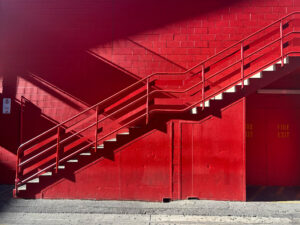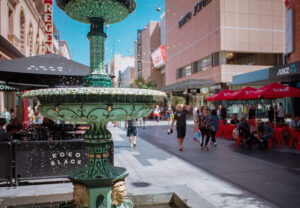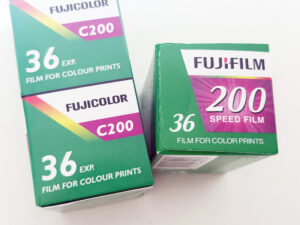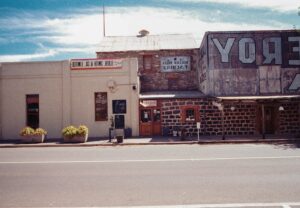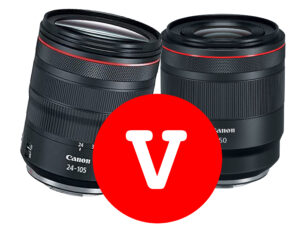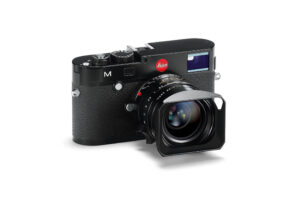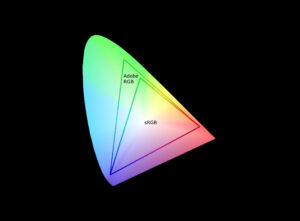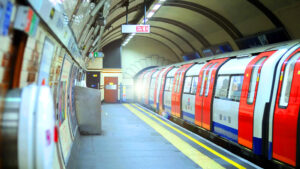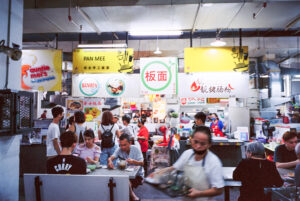FujiFilm Film Simulations are digital presets that bring the artistry of analog film into the modern digital age. Rooted in decades of FujiFilm’s expertise in colour science, these simulations replicate the tones, contrasts, and textures of FujiFilm’s legendary film stocks. With their rich heritage, these simulations provide photographers with a creative palette that blends nostalgia with innovation.
FujiFilm Film Simulations are a hallmark feature of X Series and GFX cameras, masterfully designed to replicate the aesthetics of iconic analog film. These simulations offer photographers a unique opportunity to explore a variety of tones, contrasts, and colors directly in-camera or through post-processing. Whether you are an experienced professional or a budding enthusiast, understanding and using these color profiles can elevate your photography to new heights.
In this comprehensive guide, we delve into FujiFilm Film Simulations with detailed comparisons and in-depth analysis. By exploring each simulation, its characteristics, and its applications, you’ll gain the insights needed to make the most of your FujiFilm camera’s creative potential.
What Are FujiFilm Film Simulations?
FujiFilm Film Simulations are digital presets that bring the artistry of analog film into the modern digital age. Rooted in decades of FujiFilm’s expertise in color science, these simulations replicate the tones, contrasts, and textures of FujiFilm’s legendary film stocks. With their rich heritage, these simulations provide photographers with a creative palette that blends nostalgia with innovation.
Why This Comparison is Unique
This is a comprehensive and practical evaluation of every FujiFilm Film Simulation. I have taken the same photograph using each of Fuji’s film simulation for comparison, both with a color chart for controlled accuracy and in real-world scenarios to showcase their practical applications. Additionally, I’ve compared these simulations to the original FujiFilm camera films they are based on, for a side-by-side analysis of digital versus the real deal analog aesthetics.
Download the RAWs and try them for yourself
I’ve included Fuji RAW files, allowing you to experiment with these simulations firsthand and see the results for yourself.
How to select a FujiFilm Film Simulation
JPEG shooters can select Film Simulations directly in-camera. For those shooting in RAW, Film Simulations offer unparalleled flexibility in post-processing. Each simulation is easily accessible through your camera’s Quick Menu (Q button) or assigned function buttons for swift adjustments during shoots. For RAW files, these simulations can be applied in post-production using Adobe Lightroom, Capture One, or FujiFilm’s proprietary X RAW Studio.
JPEG or RAW for FujiFilm Film Simulations
If you shoot JPEG on your Fuji camera and select a film simulation colour profile, your JPEG file will have that look baked into it. That can be fine for some situations when you need to deliver images quickly with really good looking colour. For flexibility though, you can also shoot RAW and then in Adobe Lightroom choose the FujiFilm Film Simulation you want to use later on.
Selecting in Camera by Pressing the Q Button
I really like the way the camera helps you with choosing a profile with a summary of all the FujiFilm Film simulations and colour profiles in the menu.
Choosing a FujiFilm Film Simulation in Adobe Lightroom
If you shoot RAW, when your images are in your RAW editor, such as Adobe Lightroom, you can cchoose to apply a film simulation to it later.
The Advantages of FujiFilm Film Simulations
Authentic Analog Aesthetics
FujiFilm Film Simulations offer the ability to recreate the unique looks of iconic film stocks like Velvia, ASTIA, and PROVIA, ensuring your digital images retain the beauty and depth of analog photography.
Creative Versatility
With a wide range of profiles, FujiFilm provides something for every style and subject, from bold landscapes to delicate portraits.
Efficiency and Quality
These simulations allow photographers to achieve professional-grade results straight out of the camera, saving valuable time while ensuring stunning image quality.
Adaptability
FujiFilm Film Simulations adapt seamlessly to various photographic genres, whether you’re shooting vibrant travel scenes, soft-toned portraits, or cinematic stills.
FujiFilm Film Simulations Colour Charts
The color chart comparison section evaluates each FujiFilm Film Simulation against a standardized color chart, providing a consistent and precise analysis of how each profile handles tones, saturation, contrast, and dynamic range. This controlled approach highlights subtle differences, such as Velvia’s vivid greens and blues, ASTIA’s soft warmth, and CLASSIC CHROME’s muted tones, helping photographers understand the unique color renditions of each simulation. By offering an objective look at how these profiles manipulate color accuracy and character, this comparison helps photographers choose the best simulation for their style or project needs while showcasing the educational value of exploring digital presets that mimic iconic analog films.












While testing FujiFilm Film Simulations with a color chart provides valuable insights into their technical behaviors, real-life scenarios reveal their true artistic potential. This section explores how each simulation performs in practical settings, from vibrant landscapes and dynamic street scenes to intimate portraits and cinematic stills. By applying the simulations to a range of real-world subjects, we uncover how they handle complex lighting, textures, and emotions, showcasing their strengths and nuances. These comparisons will help you understand how each profile can bring your creative vision to life, providing inspiration and guidance for using these simulations in your photography.
Detailed Guide to FujiFilm Film Simulations

Provia
PROVIA is the foundation of FujiFilm Film Simulations, providing a balanced, true-to-life rendering of colors and tones. Inspired by the professional-grade FUJICHROME PROVIA slide film, this simulation combines vibrancy with natural realism, making it an all-purpose profile suitable for a wide range of photographic scenarios.
Whether you’re capturing landscapes, portraits, or urban scenes, PROVIA ensures that your images remain faithful to reality while enhancing their visual appeal. Its balanced contrast and moderate saturation make it a versatile choice for photographers transitioning from analog to digital workflows.
FujiFilm Provia Image Gallery





























Key Features
- Accurate skin tone reproduction
- Balanced vibrancy for various subjects
- Moderate contrast for versatility
Best For
- Landscapes
- Portraits
- General photography
My Provia Observations
PROVIA presents natural and lifelike colors, ensuring greens, blues, and skin tones look realistic without overemphasis. The highlights are well controlled, avoiding harsh clipping, while shadows retain detail, providing a balanced exposure latitude. Contrast is moderate, making it an adaptable choice for a variety of scenes.

Velvia, Ultra Vivid
Velvia is synonymous with vibrancy and drama. Inspired by FUJICHROME Velvia, a revered slide film, this simulation amplifies saturation and contrast, making every color pop. Ideal for landscapes and nature photography, Velvia transforms ordinary scenes into visually striking compositions.
Velvia excels at highlighting the richness of greens, blues, and reds, making it the go-to profile for outdoor enthusiasts. It’s also perfect for creating dynamic travel and adventure photos where impactful colors are essential. However, its intensity requires careful use to avoid overwhelming subtle details.
FujiFilm Velvia Image Gallery





























Key Features
- High color saturation
- Bold contrast for dynamic imagery
- Enhanced depth for natural beauty
Best For
- Landscapes
- Nature photography
- Travel photography
Real Velvia film Gallery
I’ve shot VELVIA for real. The film is not easy to expose as it has a very small latitude. You can see this come through in the digital Film Simulation. I like the fact I can try it out digitally now without wasting too much film. Plus getting slide film processed these days is not easy.









My Velvia Observations
Velvia’s saturation makes greens and blues incredibly vivid, perfect for nature photography but sometimes overpowering in portraits. Highlights are prone to clipping in very bright scenes, so careful exposure is required. Contrast is high, giving dramatic depth, but it narrows exposure latitude, demanding thoughtful metering.

Astia, Soft, detailed, rich colour
ASTIA offers a refined balance of softness and vibrancy, making it a favorite among portrait and fashion photographers. Originally derived from FUJICHROME ASTIA, this simulation provides gentle transitions between tones and subtle color enhancements, ensuring subjects appear polished and natural.
Its ability to capture fine details without overpowering textures makes ASTIA a versatile choice for various lighting conditions. Whether you’re working with natural light or studio setups, ASTIA’s understated elegance adds depth and sophistication to your images.
FujiFilm Astia Image Gallery





























Key Features
- Smooth tonal transitions
- Subtle vibrancy for natural results
- Excellent skin tone rendering
Best For
- Portraits
- Fashion photography
- Interiors
My Astia Observations
ETERNA BLEACH BYPASS emphasizes contrast, making shadows deeper and more pronounced while highlights retain clarity without clipping. Colors are muted, with a noticeable reduction in vibrancy across the spectrum, creating a subdued yet impactful aesthetic. Exposure latitude is narrower, so careful metering is essential to balance the extremes of light and dark.

Reala ACE
REALA ACE is designed to deliver true-to-life color reproduction with a subtle analog aesthetic. This simulation is inspired by FujiFilm’s legacy REALA films, known for their natural tones and high accuracy across the color spectrum. REALA ACE is an all-rounder, making it well-suited for snapshots, family photos, and versatile everyday shooting.
Its ability to capture colors in a natural yet slightly understated manner ensures that your images maintain a professional quality without appearing over-processed. This makes it a reliable choice for photographers who value realism with a hint of nostalgia.
Reala ACE Image Gallery





























Key Features
- Natural color rendering with analog character
- Balanced tones for a wide variety of scenes
- Subtle contrast for added versatility
Best For
- Everyday photography
- Family snapshots
- Street photography
My Reala ACE Observations
REALA ACE produces balanced, true-to-life colors with slightly muted tones, making it ideal for creating natural and understated images. Highlights and shadows are managed evenly, providing good detail in both bright and dark areas. Contrast is soft, enhancing the overall versatility of this simulation, while exposure latitude is forgiving, accommodating dynamic lighting conditions with ease.

Classic Chrome
CLASSIC CHROME evokes the timeless aesthetics of 20th-century photojournalism. Its muted colors and subdued contrasts create a cinematic and nostalgic feel, ideal for storytelling and editorial work. It lends itself really well to CMYK color conversions for magazine printing which makes sense as this was how most of these images were published.
With reduced vibrancy in reds and greens, CLASSIC CHROME directs attention to lighting, composition, and narrative. It’s particularly effective for street photography, documentary projects, and images requiring a sophisticated, retro aesthetic.
FujiFilm Classic Chrome Image Gallery





























Key Features
- Muted color palette
- Subtle contrasts for depth
- Cool tones for a cinematic look
Best For
- Documentary photography
- Street photography
- Editorial projects
My Classic Chrome Observations
CLASSIC CHROME subdues reds and greens, creating a cool, muted palette perfect for vintage or serious tones. Highlights are soft, avoiding extreme brightness, while shadows are deeper, adding mood. Contrast is lower than Velvia but still noticeable, emphasizing textures and shapes.


PRO Neg. Hi and PRO Neg. Std
The PRO Neg. series is FujiFilm’s ode to professional-grade negative film, tailored for portrait photography. PRO Neg. Hi enhances contrast and saturation, making it perfect for high-energy environments. PRO Neg. Std, on the other hand, offers softer tones, ideal for controlled studio settings.
Both simulations excel in rendering natural skin tones and capturing subtle details, ensuring every portrait feels authentic and expressive. Whether working outdoors or indoors, the PRO Neg. profiles provide unparalleled flexibility.
Key Features
- PRO Neg. Hi: Enhanced contrast and bold colors
- PRO Neg. Std: Gentle tonal transitions for subtle effects
- Accurate skin tone reproduction
Best For
- Portraits
- Weddings
- Lifestyle photography
FujiFilm PRO Neg. Hi Image Gallery





























FujiFilm PRO Neg. Std Image Gallery





























Real Fuji Pro Negative Gallery (ProNEG400H)
I was really disappointed to see this film discontinued.








My PRO Neg Observations having experience with Fuji 400H
PRO Neg. Hi enhances color vibrancy, giving portraits more energy, while PRO Neg. Std softens tones for a natural, relaxed feel. Highlights are delicate in both modes, preventing overexposure, while shadows in Hi are slightly deeper for contrast. Both offer broad exposure latitude, adapting well to mixed lighting.

Acros, Neopan Black and White
ACROS redefines black-and-white photography with its exceptional tonal gradation and fine-grain rendering. Named after FUJICHROME’s NEOPAN ACROS, this simulation brings the timeless appeal of monochrome to the digital world.
Whether you’re capturing dramatic landscapes, intimate portraits, or urban street scenes, ACROS delivers depth and clarity. Its ability to emphasize textures and contrasts ensures every frame tells a compelling story.
FujiFilm Acros Image Gallery





























Key Features
- Rich blacks and lifelike shadows
- Fine grain for texture
- Outstanding tonal range
Best For
- Black-and-white landscapes
- Street photography
- Fine art
Fuji did a great job of the Acros Film Simulation
Having show real ACROS film in the past, I reckon the digital Film Simulation for ACROS is spot on.



My Acros Observations having shot the real deal film
CROS produces deep blacks and smooth tonal transitions, making it ideal for moody or artistic compositions. Highlights are gentle, avoiding stark contrasts, while shadows are rich with texture. The fine-grain effect adds a tactile quality to digital monochrome images.

Eternal Cinema Film
ETERNA, inspired by FujiFilm’s long history in cinema film production, is a simulation designed for videographers and photographers aiming to achieve a cinematic aesthetic. Unlike high-contrast and vibrant simulations like Velvia, ETERNA offers understated colors and a flat tonal profile, providing extended dynamic range perfect for post-processing and grading. Its subtle look makes it highly effective for storytelling and emotion-driven visual narratives.
When applied to still photography, ETERNA excels in situations requiring a soft and dramatic feel, such as portraits, architectural imagery, or staged scenes. Its natural look ensures it doesn’t overpower the subject, allowing lighting and composition to take center stage. For filmmakers and hybrid shooters, ETERNA bridges the gap between cinematic visuals and photographic artistry.
FujiFilm Eterna Film Simulation Gallery





























Key Features
- Muted color palette for cinematic effects
- Flat tonal profile for extended dynamic range
- Ideal for grading and post-processing
Best For
- Filmmaking
- Cinematic portraiture
- Architectural photography
My Eterna Observations
ETERNA offers muted colors, reducing intensity for a cinematic mood. Highlights roll off gently, ensuring a smooth transition, while shadows are soft but retain depth. Contrast is low, making it ideal for scenes requiring subtle tonal gradation or extensive post-production.

ETERNA BLEACH BYPASS
ETERNA BLEACH BYPASS brings the dramatic and distinctive look of bleach bypass processing to FujiFilm’s digital cameras. This simulation creates high contrast and desaturated tones, evoking a cold, cinematic mood that’s perfect for storytelling. The aesthetic originated in Japanese cinema and is often associated with sci-fi, dystopian, and psychological thriller genres.
This simulation enhances textures and lighting, making it ideal for urban landscapes, moody portraits, or scenes with a futuristic or industrial edge. While it maintains the muted colors characteristic of ETERNA, the additional contrast ensures subjects stand out dramatically, even in complex compositions. ETERNA BLEACH BYPASS is a bold choice for photographers looking to make a strong stylistic statement.
FujiFilm ETERNA BLEACH BYPASS Gallery





























Key Features
- High contrast with muted saturation
- Cinematic tones for storytelling
- Enhanced texture and detail emphasis
Best For
- Urban and industrial photography
- Cinematic portraiture
- Storytelling-driven projects
My Eterna Bleach Bypass Observations
ETERNA BLEACH BYPASS emphasizes contrast, making shadows deeper and more pronounced while highlights retain clarity without clipping. Colors are muted, with a noticeable reduction in vibrancy across the spectrum, creating a subdued yet impactful aesthetic. Exposure latitude is narrower, so careful metering is essential to balance the extremes of light and dark.

Classic Neg
CLASSIC Neg. is FujiFilm’s tribute to the everyday consumer films of the past. Designed to replicate the look of print film, this simulation captures the nostalgic feel of family albums and candid snapshots. With its balanced color contrast and slight shifts towards magenta in highlights and cyan in shadows, CLASSIC Neg. evokes the charm of analog photography. It has some of the most different color when compared to the other Fuji profiles.
This simulation excels in street photography and casual settings, providing a vintage aesthetic that feels warm and approachable. It’s particularly effective for creating emotional connections, making even mundane scenes feel timeless. CLASSIC Neg. offers a perfect blend of character and realism, making it a favorite among photographers seeking a retro-inspired look.
FujiFilm Classic Neg Image Gallery





























Key Features
- Nostalgic tones with balanced contrast
- Magenta highlights and cyan shadows
- Warm, film-like rendering
Best For
- Street photography
- Family and lifestyle photography
- Retro-themed projects
Gallery: If you liked the Fuji Superia film, you’ll love Fuji Nostalic Neg
Here are some shots from the real Fuji Superia from back in the day.









My Classic Neg Observations
CLASSIC Neg. delivers warm highlights and cooler shadows, creating a pleasing balance that feels distinctly nostalgic. Shadows are rich and well-defined, while highlights maintain a soft glow without harsh clipping. Contrast is moderate, offering flexibility for a variety of lighting conditions, and exposure latitude is forgiving, making it easy to achieve pleasing results in dynamic environments.

Nostalgic Neg
Nostalgic Neg. is FujiFilm’s modern reinterpretation of New American Color photography, delivering amber highlights and vibrant shadows to create a dreamy, vintage-inspired aesthetic. This simulation is ideal for photographers who want their images to evoke warmth and a sense of time gone by. The amber tones in highlights add richness and depth, while its vibrant midtones ensure images retain a contemporary edge.
Nostalgic Neg. works wonderfully in portraits and street photography, especially in settings with mixed or natural lighting. It excels at capturing emotion, making it a go-to for storytelling and artistic projects. For photographers looking to merge the past with the present, this simulation offers unparalleled creative possibilities.
FujiFilm Nostalgic Neg Gallery





























My Nostalgic Neg Observations
Nostalgic Neg. produces warm, inviting highlights that complement skin tones, while shadows retain a slight vibrancy that enhances depth. Colors are richly saturated in the midtones, with subtle transitions that add emotional resonance. Contrast is moderate, and the simulation performs well in varied lighting, offering flexibility in exposure.
Key Features
- Amber highlights for vintage warmth
- Vibrant shadows for contemporary depth
- Evocative tones for emotional storytelling
Best For
- Portrait photography
- Street photography
- Fine art projects
FujiFilm Film Simulations combine the best of analog charm and digital precision, providing photographers with a versatile and creative toolkit. Whether you’re aiming for vibrant landscapes, elegant portraits, or nostalgic imagery, there’s a simulation for every vision.
Embrace the possibilities of FujiFilm Film Simulations and discover how they can transform your photography into an art form that bridges the past and the future. Whether you are drawn to nostalgic tones, dynamic contrasts, or true-to-life colors, these simulations provide endless possibilities to elevate your photography. Dive in, experiment, and let your creativity soar!
What Fuji is doing is a testament to the company’s rich heritage and dedication to empowering photographers with tools that blend analog charm and digital precision. This comprehensive exploration of each simulation—tested with both color charts for accuracy and real-world applications for practicality—demonstrates the versatility and artistic potential of these profiles. From the vibrant greens of Velvia to the cinematic mood of ETERNA, each simulation offers unique characteristics that cater to different creative visions.




